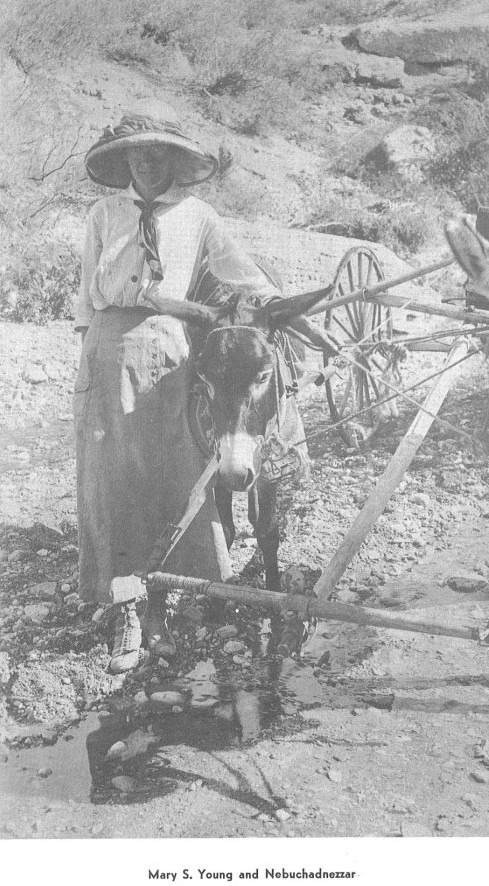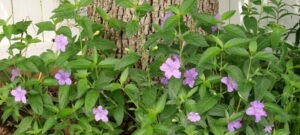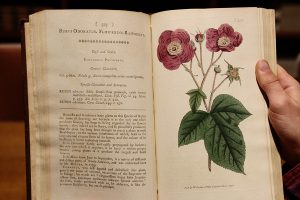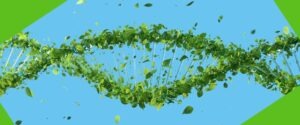By Research Associate Will Godwin, PhD
Adaptive reuse or re-purposing has become a popular method to achieve green or sustainable design. It even extends into the aesthetics of interior design through shabby-chic and the more avant-garde, lab-chic. But reuse is not a recent idea. It has a long history in the natural world. Charles Darwin was the first to call it “pre-adaptation.” By the 1980’s the term was adjusted to “exaptation” primarily to avoid connotations of premeditation. Exaptation happens when a structure or behavior that was useful for one function is suddenly and serendipitously useful in a new way. Animals and plants have been finding fortuitous new uses for stuff they already had for millions of years. Often it gave the survivors that unexpected edge required to survive. The unexpected part is important.
So when BRIT Research Associate and curator of the East Texas Natural History Collection, Dr. Will Godwin, visited BRIT in January for lunch with the Director of the Hebarium, Amanda Neill, they took a short-cut through the loading bay. An exaptation happened there.
“What’s that big freezer doing there? Are you getting rid of it?”
“Yeah it’s busted… That’s Mary Sophie… Let’s eat.”
It went something like that.
It turns out that BRIT research staff have unusual sentimental attachments to their appliances and name them for famous botanists. The freezers, for reasons I dare not question, are named for women…

Mary Sophie Young developed the herbarium at the University of Texas in Austin in the second decade of the 20th century and explored the remote regions of the trans-Pecos with her plant press and her donkey, Nebuchadnezzar. Now she was memorialized by a large, sub-zero freezer at BRIT. But she had sprung a fatal leak in her secondary copper condenser coils. Facilities Manager Greg Gunn informed us that Mary Sophie was irreparable. She was about to be picked-up by someone who was going to cut out her copper tubing and junk the rest.
“That’s a shame. I want it. I’ll use it in my museum. Can I have it?” said Godwin. After lunch, a quick check with Gunn revealed that the first salvager was late. Don’t ever be late.
“It’s yours, but it’s super heavy and it can’t be fixed and I don’t know why you want it… You’ll need special equipment and some help to move it.” Translation: you’re crazy.
Dr. Godwin was back in three days with the college truck. He was alone. In the meantime Gunn had done some research in the thorough manner of a facilities manager at a science institute.
“The specs say it weighs 750 pounds. You’ll never get it in there,” said Gunn.
“Just leave me alone and let me think about it,” said Godwin.
Altruism is the idea that one being might have selfless concern for the plight of another. The idea does not come from the world of biology like exaptation did, but it is driving an important area of study in ecology. Auguste Marie François Xavier Comte first wrote about altruism in the disarray bracketing the French Revolution. He was also the creator of the doctrine of positivism. The selfless part is important—and the positivism.
It just so happens that Fort Worth has hosted an old Texas Tradition since 1896 that was originally called the Fat Stock Show. Now it is called the Fort Worth Stock Show and Rodeo. It is held every January in the Will Rogers Memorial Center across the street from BRIT and is full of the nicest, most altruistic people in Texas…and tractor shows.
A quick walk over to the tractor exhibition and a little explaining about the value of botany and museums quickly convinced one of the exhibitors that it would be a nice thing to run around the block and pick-up Mary Sophie with some conveniently arranged hay forks—another example of exaptation? He gently placed her in the truck bed. She was off to her new home and purpose at the East Texas Natural History Collection (ETNHC) on the campus of Jarvis Christian College, which is a cousin to Texas Christian University.
Mary Sophie languished in the hallway until June when students arrived for the NSF Summer Science Institute to try their hand at undergraduate research. Several of them came to work under Dr. David Cole, an ichthyologist from Utah who is a regular part of the Jarvis summer faculty.
Fish collections are more problematic than herbaria. They require jars of formalin and alcohol. Large specimens may be desirable, but are expensive to store. Many collections resort to morgue-tanks where fishes float in perpetually silent schools with scientific data tags tied to each one. Dr. Godwin had seen several of these tanks on visits to Dr. Dean Hendrickson’s facilities in Austin at the Texas Natural Science Center. That facility has nearly one million fish specimens with over 43,000 jars and several tanks for large specimens. Godwin was impressed. Mary Sophie was perfectly pre-adapted for this new function. She had a chamber, four-feet long, lined with heavy galvanized metal, a high quality rubber gasket and a lock-down latch.
So it became the summer project for the Keys brothers, Nicholas and Reginald. The brothers have enrolled in Jarvis College’s National Science Foundation Summer Science Institute twice. In addition to their research on fishes of the Red River, they caulked Mary Sophie’s seams and painted the inside with protective coats of Rustoleum. And they were careful to preserve the mysterious label on the front reading “Mary Sophie” as directed.
After the paint cured, Mary Sophie was filled with water and formalin in a 10% solution and introduced to her first new charges: drum, bowfin, stingray, and flathead catfish. When budget allows she will be converted to alcohol. Now the word has gone out to friends of the ETNHC that a new tank is ready to receive large river fish such as alligator gar or any other unusual specimens—as long as they don’t exceed four feet.

At the present rate, Mary Sophie should accommodate five years of growth in the ETHNC ichthyological holdings. She will excite and interest hundreds of students who want to see “river monsters.” Perhaps she will help start the career of a future ichthyologist—a far superior destiny than the landfill and even better than being recycled. The carbon footprint of a re-purposing is usually considerably smaller because it avoids the energy use of hauling, melting, new manufacture, hauling again, etc.
The U.S. Green Building Council, which certified BRIT’s new building as the eighth Platinum class building in Texas in 2011, recognizes the value of materials reuse as a valuable way to lessen the impact of new construction. The formula for calculating the LEED rating of a building allows up to two points for exemplary reuse of materials, furniture, and equipment. That’s considerable when you note that LEED Platinum only requires 52 points.
What’s the lesson? Mary Sophie the Freezer represents one tiny example of adaptive reuse, but the main advantage will be her value as a teaching tool. She is prominent in the hallway at the back of the ETNHC, a concrete lesson in survival, history, exaptation, innovation, and yes, even altruism. She will illustrate to students that the principle of smart design and smart use of resources is going to be ever more important if we are to accommodate both a growing population and the plants and animals that make this a beautiful place to live.
For more information on Mary Sophie Young, check out the following links:
- Mary S. Young’s Journal of Botanical Explorations in Trans-Pecos Texas, August-September, 1914 – part 1, part 2
- “Plant Pioneer” – article from Texas Parks and Wildlife Magazine
- “Texas Botanist, Mary Sophie Young” – a blog post about MSY





